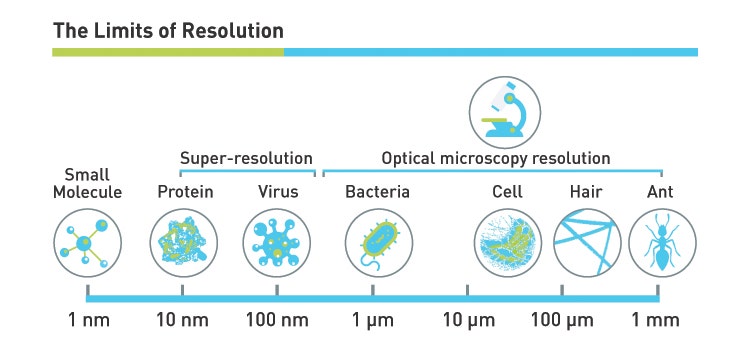What Magnification Do I Need To See Bacteria?
Bacteria are tiny living microorganisms that live in enormous numbers in almost every environment on Earth. From deep within the soil to inside the digestive tract of humans. In order to see bacteria under microscope, you will need to view them under the magnification of microscopes as bacteria are too small to be observed by the naked eye.
Most bacteria are 0.2 um in diameter and 2-8 um in length with a number of shapes, ranging from spheres to rods and spirals. Bacteria have colour only when they are present in a colony, single bacteria are transparent in appearance. At high magnification*, the bacterial cell microscope will float in and out of focus, especially if the layer of water between the cover glass and the slide is too thick. It takes a skilled person to be able to differentiate bacteria from small dust and dirt which may be present on the slide. Some bacteria are found in bunches and therefore, makes it difficult to see the individual cells.
Magnification Strengths
Microscope objectives give you the ability to view samples at different magnification strengths. When viewing bacteria, you will notice the different objectives will obviously yield different results:


Transparent bacteria are often difficult to see/recognise. For them, you can use phase-contrast optics. This method makes the bacteria visible by making bacteria darker or lighter than the background. Alternatively, you can stain bacteria for better results. But this method may introduce artifacts.
The figure below gives you an idea about the relative sizes and which resolution is used to see them.


*(i) To calculate the magnification for a compound microscope, you need to know about two sets of lenses.
- Objective lens -which is closest to the specimen slide stage, produces an enlarged, inverted image of the specimen.
- Eyepiece lens -which magnifies the image further.
The total magnification of the microscope is calculated by multiplying the magnification of the objectives, with the magnification of the eyepiece. Most educational-quality microscopes have a 10x (10-power magnification) eyepiece and three objectives of 4x, 10x & 40x to provide magnification levels of 40x, 100x and 400x.
(ii) Another thing to consider is that microscope resolution which is the ability to see close but separate points as distinct comes from the objective lenses, not from the eyepieces. All an eyepiece can do is magnify the resolution that is already provided by the objective. To illustrate, a 40x objective and a 10x eyepiece will result in a higher resolution (more detailed) image than a 20x objective and a 20x eyepiece. Total magnification is the same, but the detail, the resolution, will be better with the 40x objective.


